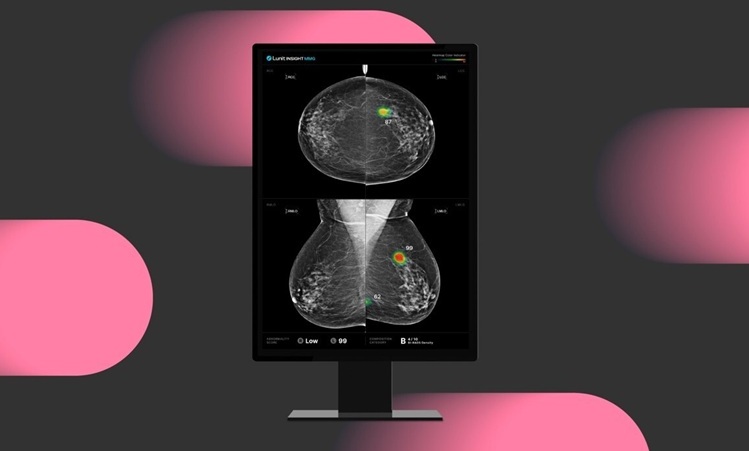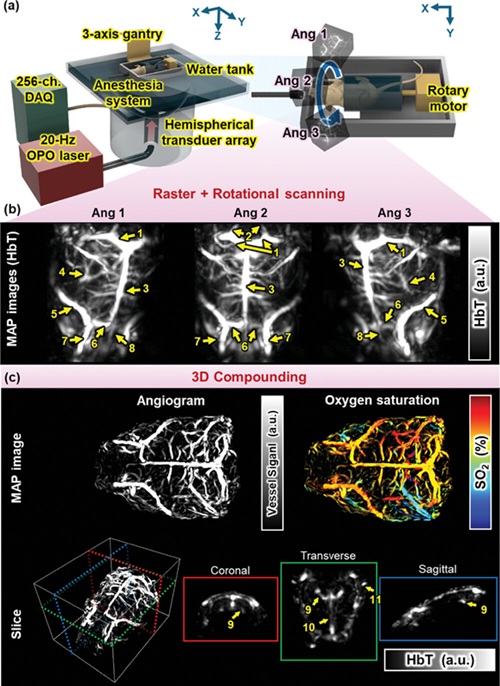Combining Imaging Techniques Could Enable Surgical Removal of Prostate Cancer Without Biopsy
|
By MedImaging International staff writers Posted on 15 Nov 2024 |

Prostate cancer (PCa) is one of the most prevalent cancers in men. Traditionally, PCa is diagnosed through biopsy, where a small tissue sample is collected from the affected area using imaging methods, such as ultrasonography. However, ultrasound-guided prostate biopsy has poor sensitivity, often leading to the detection of clinically insignificant PCa. Moreover, the use of transrectal ultrasound-guided prostate biopsy can be costly and comes with risks, such as urinary tract infections. A biopsy is usually required before recommending radical prostatectomy (RP), a common surgical procedure to remove the prostate gland in PCa patients.
To address these challenges, researchers are working on alternatives that could eliminate the need for biopsy prior to RP. Imaging techniques like multiparametric magnetic resonance imaging (mpMRI), which uses magnetic fields and radio waves, and prostate-specific membrane antigen positron emission tomography (PSMA PET) combined with computed tomography (CT), which uses radioactive tracers and X-ray imaging, have proven diagnostic value for PCa. In PSMA PET/CT, the presence of cancer is assessed based on the maximum standardized uptake value (SUVmax), indicating the amount of radioactive tracer absorbed by cancer cells. Previous studies have shown that combining PSMA PET/CT with MRI can reduce the likelihood of missing clinically significant PCa cases (false negatives)
Building on these findings, researchers from the Chinese Academy of Medical Sciences (Beijing, China) investigated whether PSMA PET/CT combined with MRI could help patients with suspected PCa avoid biopsy prior to undergoing RP. The study included 56 patients with PCa who had RP without a preoperative biopsy, recruited from two tertiary hospitals between December 2017 and April 2022. The agreement between clinical diagnoses and pathological findings was evaluated. Patients with elevated prostate-specific antigen levels or abnormal results from a digital rectal examination were recommended to undergo mpMRI. Positive mpMRI results were defined as having a Prostate Imaging Reporting and Data System (PI-RADS) score of 4 or higher. Similarly, PSMA PET/CT results were considered positive when the SUVmax value was 4 or greater. Only patients with elevated prostate-specific antigen levels, positive mpMRI results, and positive PSMA PET/CT findings, who opted not to have a biopsy, were considered for the biopsy-free approach.
Among the 56 patients who underwent RP, pathological analysis confirmed PCa in 55 cases, with 49 of these patients diagnosed with clinically significant PCa. One case was misdiagnosed as high-grade prostatic intraepithelial neoplasia (HGPIN). The prostate-specific antigen levels and SUVmax values in patients with clinically significant PCa were higher than in those with clinically insignificant PCa or HGPIN. Additionally, the median prostate volume was lower in patients with clinically significant PCa. Extracapsular extension was accurately detected in 21 of 26 patients, while five patients were mistakenly classified as having localized disease. When the SUVmax cutoff was raised to 7.5 or higher, PSMA PET/CT's diagnostic accuracy for clinically significant PCa reached 100%. These results, published in the Chinese Medical Journal, suggest that combining PSMA PET/CT with MRI could enable a biopsy-free approach to RP in patients with PCa.
“This diagnostic technique is a boon for patients to decrease the medical costs and hospitalization duration and avoid complications associated with biopsy,” said Dr. Nianzeng Xing from the Chinese Academy of Medical Sciences who led the study.
Latest General/Advanced Imaging News
- AI Model Significantly Enhances Low-Dose CT Capabilities
- Ultra-Low Dose CT Aids Pneumonia Diagnosis in Immunocompromised Patients
- AI Reduces CT Lung Cancer Screening Workload by Almost 80%
- Cutting-Edge Technology Combines Light and Sound for Real-Time Stroke Monitoring
- AI System Detects Subtle Changes in Series of Medical Images Over Time
- New CT Scan Technique to Improve Prognosis and Treatments for Head and Neck Cancers
- World’s First Mobile Whole-Body CT Scanner to Provide Diagnostics at POC
- Comprehensive CT Scans Could Identify Atherosclerosis Among Lung Cancer Patients
- AI Improves Detection of Colorectal Cancer on Routine Abdominopelvic CT Scans
- Super-Resolution Technology Enhances Clinical Bone Imaging to Predict Osteoporotic Fracture Risk
- AI-Powered Abdomen Map Enables Early Cancer Detection
- Deep Learning Model Detects Lung Tumors on CT
- AI Predicts Cardiovascular Risk from CT Scans
- Deep Learning Based Algorithms Improve Tumor Detection in PET/CT Scans
- New Technology Provides Coronary Artery Calcification Scoring on Ungated Chest CT Scans
- Deep Learning Model Accurately Diagnoses COPD Using Single Inhalation Lung CT Scan
Channels
Radiography
view channel
Higher Chest X-Ray Usage Catches Lung Cancer Earlier and Improves Survival
Lung cancer continues to be the leading cause of cancer-related deaths worldwide. While advanced technologies like CT scanners play a crucial role in detecting lung cancer, more accessible and affordable... Read more
AI-Powered Mammograms Predict Cardiovascular Risk
The U.S. Centers for Disease Control and Prevention recommends that women in middle age and older undergo a mammogram, which is an X-ray of the breast, every one or two years to screen for breast cancer.... Read moreUltrasound
view channel
Tiny Magnetic Robot Takes 3D Scans from Deep Within Body
Colorectal cancer ranks as one of the leading causes of cancer-related mortality worldwide. However, when detected early, it is highly treatable. Now, a new minimally invasive technique could significantly... Read more
High Resolution Ultrasound Speeds Up Prostate Cancer Diagnosis
Each year, approximately one million prostate cancer biopsies are conducted across Europe, with similar numbers in the USA and around 100,000 in Canada. Most of these biopsies are performed using MRI images... Read more
World's First Wireless, Handheld, Whole-Body Ultrasound with Single PZT Transducer Makes Imaging More Accessible
Ultrasound devices play a vital role in the medical field, routinely used to examine the body's internal tissues and structures. While advancements have steadily improved ultrasound image quality and processing... Read moreNuclear Medicine
view channel
Novel PET Imaging Approach Offers Never-Before-Seen View of Neuroinflammation
COX-2, an enzyme that plays a key role in brain inflammation, can be significantly upregulated by inflammatory stimuli and neuroexcitation. Researchers suggest that COX-2 density in the brain could serve... Read more
Novel Radiotracer Identifies Biomarker for Triple-Negative Breast Cancer
Triple-negative breast cancer (TNBC), which represents 15-20% of all breast cancer cases, is one of the most aggressive subtypes, with a five-year survival rate of about 40%. Due to its significant heterogeneity... Read moreGeneral/Advanced Imaging
view channel
AI Model Significantly Enhances Low-Dose CT Capabilities
Lung cancer remains one of the most challenging diseases, making early diagnosis vital for effective treatment. Fortunately, advancements in artificial intelligence (AI) are revolutionizing lung cancer... Read more
Ultra-Low Dose CT Aids Pneumonia Diagnosis in Immunocompromised Patients
Lung infections can be life-threatening for patients with weakened immune systems, making timely diagnosis crucial. While CT scans are considered the gold standard for detecting pneumonia, repeated scans... Read moreImaging IT
view channel
New Google Cloud Medical Imaging Suite Makes Imaging Healthcare Data More Accessible
Medical imaging is a critical tool used to diagnose patients, and there are billions of medical images scanned globally each year. Imaging data accounts for about 90% of all healthcare data1 and, until... Read more
Global AI in Medical Diagnostics Market to Be Driven by Demand for Image Recognition in Radiology
The global artificial intelligence (AI) in medical diagnostics market is expanding with early disease detection being one of its key applications and image recognition becoming a compelling consumer proposition... Read moreIndustry News
view channel
GE HealthCare and NVIDIA Collaboration to Reimagine Diagnostic Imaging
GE HealthCare (Chicago, IL, USA) has entered into a collaboration with NVIDIA (Santa Clara, CA, USA), expanding the existing relationship between the two companies to focus on pioneering innovation in... Read more
Patient-Specific 3D-Printed Phantoms Transform CT Imaging
New research has highlighted how anatomically precise, patient-specific 3D-printed phantoms are proving to be scalable, cost-effective, and efficient tools in the development of new CT scan algorithms... Read more
Siemens and Sectra Collaborate on Enhancing Radiology Workflows
Siemens Healthineers (Forchheim, Germany) and Sectra (Linköping, Sweden) have entered into a collaboration aimed at enhancing radiologists' diagnostic capabilities and, in turn, improving patient care... Read more



















